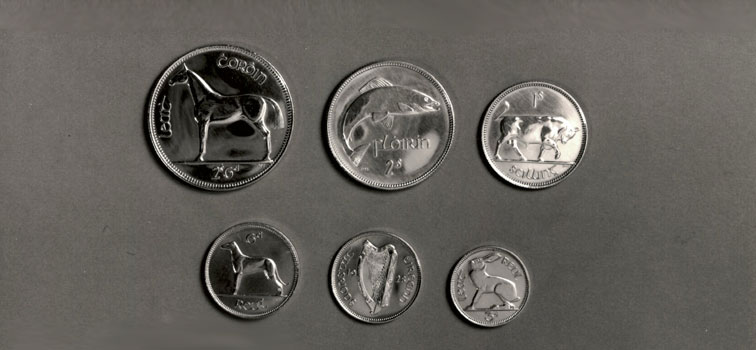How farmyard animals ended up on Ireland's first coins

For most people, being given a licence to print money indicates the enticing prospect of great wealth for very little effort. However, when Saorstat Eireann’s (the Irish Free State) Currency Commission was given that same freedom in 1927, its members may have felt a little daunted at the prospect.
The Commission faced the challenge of developing a brand new currency for a country that was divided politically and struggling economically. The task of developing Ireland’s first independent currency is explored in the engaging exhibition “Pounds, Shillings and Independence” which is open to the public at the Central Bank of Ireland’s Visitor Centre in Dublin’s North Wall Quay.
The exhibition guides visitors on a journey of discovery through independent Ireland’s early economic history and the birth of its new national currency. Central to the exhibition is the story of how iconic images of animals, which would become synonymous with Irish life for generations, ended up on the shiny new coins.
At the outset it was decided that the coinage should bear images of the products of the country rather than any religious effigies or patriotic symbols. A committee of artists – chaired by none other than WB Yeats – settled on the theme of featuring traditional Irish animals for the coins, to include among others, the wolfhound, salmon and bull.
The next challenge the Committee faced was deciding who would design the coins that would go on to live in Irish pockets for the remainder of the century. An initial call to the public for submissions was met with a disappointing response, so the committee reverted to holding a competition between seven noted artists – three of whom were Irish.
"Incomparably superior"
As part of the judging process, the Committee studiously appraised 66 individual coin designs - 3D-printed replicas of which are on display in the exhibition. To ensure fairness, they did not know the identity of the artist when appraising each design.
In the case of every coin, it was the design work of Percy Metcalfe – an Englishman – that won out, with the committee describing his designs as “incomparably superior” to the competition. However, the committee’s judgement didn’t end with picking the winning designs.
Given the political climate at the time, and conscious of choosing Metcalfe – rather than an Irish artist – the committee appealed to the government that all of the submitted designs should be made public. “We urge that the public should be given an opportunity of seeing the original designs submitted by the competitors – partly because many persons are interested in the designs and will be eager to see them, and partly because we believe any adverse criticism of the choice of Mr. Metcalfe’s designs could not survive such an inspection,” the Committee wrote in its report to the Minister for Finance.
See also: